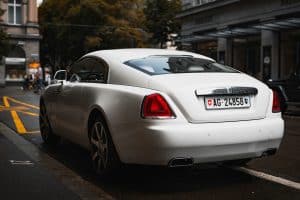Why Vehicle Culture Represents More Than Just Transportation
In today’s fast-paced world, transportation plays a crucial role in our everyday lives. From cars and motorcycles to trains and planes, vehicles have become an essential part of modern society. However, beyond their practical aspect, vehicles have also created a unique culture that goes beyond just getting from point A to point B. In this article, we will delve into the world of vehicle culture and explore why it represents more than just transportation. So buckle up and join us on this exciting ride!
The Evolution of Vehicle Culture
The history of vehicle culture goes back to the invention of the automobile in the late 19th century. Moving from horse-drawn carriages to motorized vehicles revolutionized the way people traveled and opened up a whole new world of opportunities. But it wasn’t until the early 20th century that vehicle culture truly took off.
The Rise of Car Culture
By the 1920s, cars became more affordable for the average citizen, leading to a rise in car ownership. This boom in the automotive industry gave birth to car culture – a subculture centered around cars and the passion for driving. From hotrods to muscle cars, car culture has evolved over the years, with different styles and trends emerging in different parts of the world.
Today, car culture is not just about owning a cool or flashy car; it’s about the community and the connections people make through their shared interest in automobiles. Car clubs, car meets, and car shows are just a few examples of how car culture brings people together, regardless of their backgrounds or social status.
The Allure of Motorcycle Culture
While cars may have a big following, motorcycle culture has its own dedicated fan base. Similar to car culture, motorcycle culture also started in the early 20th century, with the creation of the first motorcycles. However, unlike cars, motorcycles embody a sense of freedom and rebellion, making it a symbol of counterculture in the 1950s and 1960s.
Today, motorcycle culture has grown beyond just being associated with biker gangs or outlaws. It’s now a diverse community, with riders from different backgrounds coming together to share their love for the open road and the thrill of the ride.
The Impact of Vehicle Culture
Beyond being a form of transportation, vehicle culture has had a significant impact on various aspects of our society. Let’s take a closer look at some of the ways vehicle culture has influenced our lives.
Economic Impact
The automotive industry is a significant contributor to the world economy, generating millions of jobs and billions of dollars in revenue. The popularity of vehicle culture has also led to a rise in the aftermarket industry, supporting small businesses that cater to car and motorcycle enthusiasts.
Moreover, the cultural significance of vehicles has also made them valuable collectors’ items, with some classic cars and motorcycles selling for millions of dollars at auctions. This creates a ripple effect in the economy, benefiting various industries and businesses.
Marketing and Advertising
Vehicle culture has been a source of inspiration for marketing and advertising campaigns for decades. From car commercials to motorcycle-themed clothing lines, countless brands have used vehicle culture to appeal to their target audience and tap into their emotions. This marketing strategy has been successful because it speaks to people’s passion for vehicles and creates a sense of identity and belonging.
Inspiration for Art and Entertainment
The unique designs and aesthetics of vehicles have also inspired artists and filmmakers, making their way into art galleries and onto the big screen. Whether it’s through paintings, sculptures, or movies like the popular Fast and Furious franchise, vehicle culture has influenced various forms of art and entertainment.
In Conclusion
In a nutshell, vehicle culture is more than just about owning a car or a motorcycle; it’s a way of life. It has created a strong sense of community amongst enthusiasts and has had a significant impact on the economy, marketing, and art. So next time you see a group of cars or motorcycles cruising down the road, remember that it’s not just about getting from one place to another; it’s a representation of a rich and diverse culture that continues to evolve and inspire.










